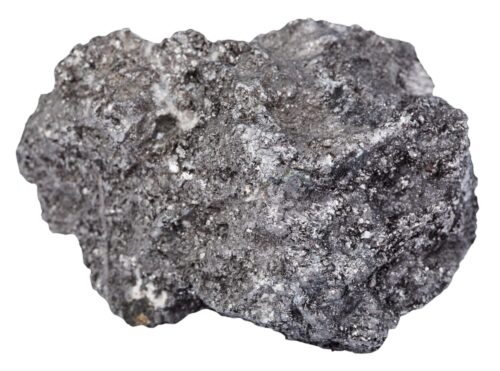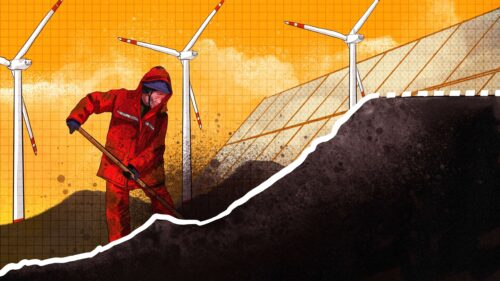GCL Group’s green tech transformation: From photovoltaic dead-end to granular silicon and battery swaps
With its five subsidiaries and a skillful boss, GCL Group has moved on from the dead-end of photovoltaic plants to new green tech, notably granular silicon and battery swaps.

On Thursday last week, after eight months of construction, a subsidiary of GCL Tech 协鑫科技 held a ceremony to launch an additional 30,000 tons of fluidized bed reactor (FBR) granular silicon capacity, used to produce solar-grade silicon at low cost, at its plant in Xuzhou, Jiangsu Province.
- GCL Tech claims that the project is the world’s largest research and development, and manufacturing center for granular silicon, and is part of the company’s strategy to provide high-quality, low-carbon silicon products for the photovoltaic industry.
- In 2022, GCL Tech’s total silicon production capacity will reach 360,000 tons, including 260,000 tons of granular silicon.
Attending the ceremony was 64-year-old Zhū Gòngshān 朱共山, Chairperson of GCL Tech and the man who made Golden Concord Limited (GCL) Group 协鑫集团 into one of China’s largest photovoltaic companies, leading it all the way through to the brink of bankruptcy and back, and in the process transforming it into one of China’s leading green technology companies. In addition to GCL Tech that produces silicon products, GCL Group comprises four other listed subsidiaries:
- GCL Energy Technology 协鑫能科, focusing on mobile energy: On June 8, the company released three new products for battery swapping electric vehicles (EVs), namely a power exchange port, battery packs, and a digital platform.
- GCL New Energy 协鑫新能源, focusing on hydrogen energy: In July 2021, the company announced plans to produce 700,000 tons of blue hydrogen (i.e. produced from fossil fuel energy, mainly coal and natural gas), and to construct 100 power stations by 2025.
- GCL System Integration Technology 协鑫集成, an engineering, procurement and construction (EPC) company: In November last year, GCL System Integration Technology acquired the necessary qualifications for wind power design and engineering, thereby completing its transformation from a photovoltaic EPC to a wind and solar energy EPC.
- GCL Perovskite 协鑫光电, focusing on the development of batteries using perovskite (a calcium titanium oxide mineral) solar cells: The company, which is invested by CATL 宁德时代, the world’s largest manufacturer of lithium-ion batteries for EVs, has completed a 100 0MW perovskite production line as a precursor to mass production.
The context
Zhu Gongshan is instrumental in all these ventures. A veteran and survivor of China’s photovoltaic industry, Zhu has steered GCL Group through difficult times. In 2013, when the State Council released guidelines on the development of the photovoltaic industry, it set off a wave of private investment in new photovoltaic power plants. GCL Group joined the throng, feeding off the financial subsidies provided by the government. But in 2018, a new policy drastically reduced government subsidies for photovoltaic plants, and suddenly the party was over, leaving GCL Group high and dry.
In 2018, GCL Group was asset-heavy and carrying a large debt burden: Its three largest subsidiaries had total liabilities of 100 billion yuan ($14.87 billion), with an overall asset-liability ratio of 77%. Though Zhu declared at the time that he was ready to retire and hand over the reins to his son, the elderly Zhu stayed on and managed to sell off some of the company’s assets.
Under Zhu’s guidance, GCL Group then doubled down on the photovoltaic materials industry, especially granular silicon, while diversifying into other areas of new energy such as battery swap technology for EVs.
- As GCL Tech steadily put the components for mass FBR granular silicon production in place, its share price started surging in the last quarter of 2020, with steady growth since then. The company currently reportedly has purchase orders worth tens of billions of yuan.
- After its public listing in 2019, GCL Energy Technology reported net profits of a billion yuan ($148.76 million) in 2021, and is constructing a battery swap network in China of 800 swap stations servicing more than 25,000 new energy vehicles this year, and plans to build 6,000 swap stations by 2025.
The takeaway
Facing the debt-laden dead-end of the photovoltaic plant construction surge, in only a few years, GCL Group has been deftly transformed by Zhu Gongshan into an integrated new energy conglomerate that is ready to make the most of Beijing’s new energy objectives. On its website, GCL Group makes it clear that the company “always listens to the Party”, and closely adheres to the new energy strategies of President Xí Jìnpíng 习近平: The company has 12 Party committees, 120 Party branches, and more than 3,000 Party members. This experience has not always been smooth for GCL Group, but under an experienced hand like Zhu, it was able to change with the times.






